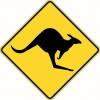Take a look at what Lie Nielsen is doing to hold the stop on their up-and-coming plow. The casting receives a steel stud, and the knurled brass knob is threaded onto the stud.
Lie Nielsen is following the original design of the early Stanley Miller's patent plow plane. My recollection is the 'stud' is actually the threaded end of a rod threaded through the body for supporting the fence.
jtk
"A pessimist sees the difficulty in every opportunity; an optimist sees the opportunity in every difficulty."
- Sir Winston Churchill (1874-1965)





 Reply With Quote
Reply With Quote








